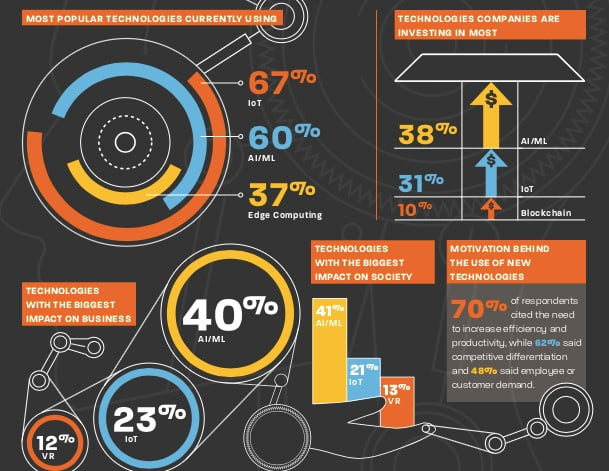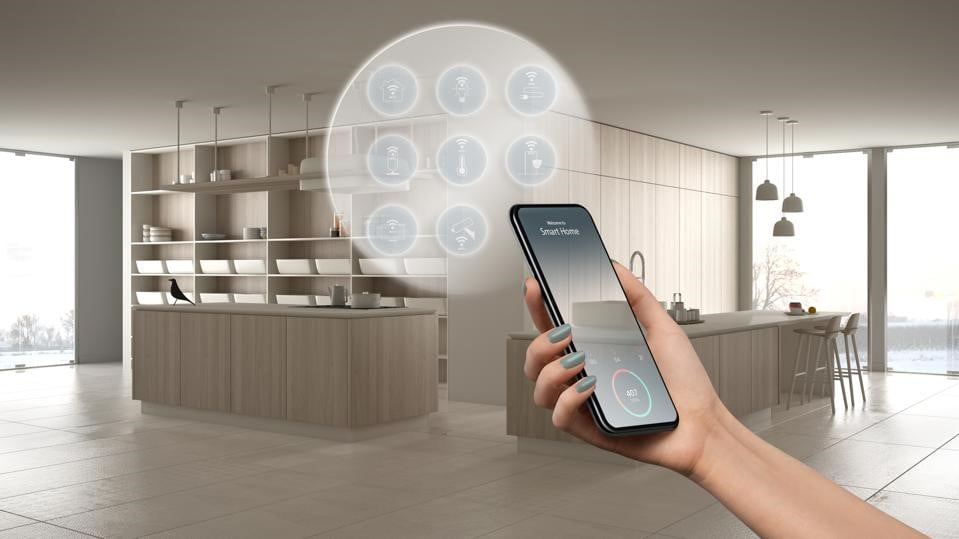According to a recent survey of 500 IT professionals, including 100 top IT executives, Artificial Intelligence and the Internet Of Things are the most popular technologies. Not only do they rate high for the popularity of use, but those same 500 IT professionals also ranked these two technologies at the top of the list. For further investment for businesses who want to increase their efficiency and gain a considerable advantage over their closest competitors.
Why AI and IoT together?
Why are these two technologies leading in front of other technologies, like blockchain or edge computing? The reason is really simple: When you combine IoT with the rapidly growing AI technologies and their ever-increasing capabilities, it creates ‘smart’ machines that can simulate intelligent behavior. These machines can make well-informed decisions with almost no human intervention.
“The result is a rapid increase in innovation, thereby causing a significant boost in productivity for all of the organizations involved,” says Diane Brady, a tech blogger at Write my X and 1 Day 2 write. This is why both the IoT and AI markets are rapidly developing and keeping pace with the industry.
What happens when you get AIoT?
When you blend both technologies, you get the artificial intelligence of things or IoT. In its simplest terms, the internet of things gadgets as a kind of digital nervous system, while the AI is the system’s brain.
From IoT to AIoT
IoT is simply a device, like smartwatches or digital assistants, connected to the internet and can be recognized by other devices and collect and process that data. This is the internet of things. AI is when a system can finish a set of tasks or learn from data in a way that seems intelligent. When you combine IoT and AI, you get devices that can analyze data AND make decisions to act on that data without human involvement. That, in essence, is AIoT. These new ‘smart’ devices drive up efficiency and effectiveness.
IoT relies on sensors implanted into machinery. All IoT-associated services follow the basic five steps: create, communicate, aggregate, analyze, and act. The value of the ‘act’ depends on how good analysis was done during the ‘analyze’ phase. The exact value of IoT is revealed, and this is where AI plays an important role. IoT provides data, and then the AI acquires the ability to come up with responses, lending both creativity and context to make smart actions. When the AI analyses data delivered from the sensor, businesses can then make informed decisions, achieving the following outcomes:
- Obtaining and handling meaningful insights from data.
- Balancing the need for both localized and consolidated intelligence.
- Ensuring fast, accurate analysis.
- Maintaining security against cyberattacks.
What are some benefits of IoT?
Businesses and consumers alike reap the benefits of artificial intelligence of things. Here are some of the top benefits of combining AI with IoT
1. Increasing efficiency at the operational level
Intelligent IoT can identify which processes are entirely redundant and time-consuming. It can also be exemplary to tune processes to enhance efficiency, boosting productivity and business operational efficiency.
2. Improving Risk Management within the workplace.
“When paired together, AI and IoT help businesses understand and better respond automatically to a broad range of risks,” says Harold Green, a tech writer at Origin Writings and Brit Student. This allows for better handling of financial loss, cyber threats, and the safety of all employees.
3. No Unplanned Downtime-ever!
Specific industries have equipment breakdowns, which cost a lot of money in unplanned downtime. Predictive maintenance with AI-enabled IoT allows for the accurate prediction of equipment failure in advance and schedules routine maintenance procedures, avoiding any unexpected downtime.
Examples of how AIoT is used today
Some of the practical applications for AIoT are:
1. Using robots in manufacturing.
As AI-enhanced factory robots can learn from newer data, factories are saving time and money, and also their manufacturing processes are becoming better over time
2. Retail
Retrieving and analyzing data collected from cameras and sensors can observe customers’ movements and predict how long it will take them to reach the checkout line. The system then can suggest staffing levels appropriate to reduce customer wait times and increase cashier productivity.
3. Tesla’s self-driving cars
A great example of AIoT working combination is Tesla’s self-driving cars. These cars can predict pedestrian and car behavior in various circumstances. They can determine road conditions and optimal speeds; they even get more intelligent with each trip.
There are many other examples where these two technologies work seamlessly together, creating a much better experience overall for businesses and consumers alike.
The artificial intelligence of things is paving the way forward for the industry.
George J. Newton is a business development manager at Write my literature review. George has been happily married for over ten years.
Check out: Top 5 Most biggest IoT Trends in 2021 you must get ready for now


